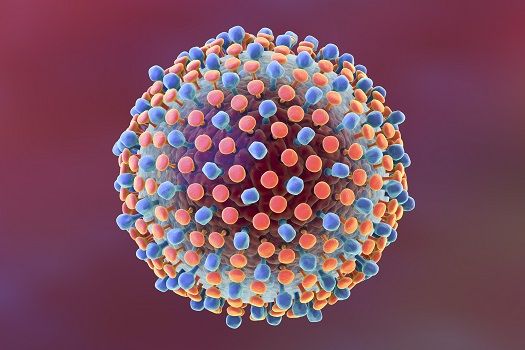Additional Benefits Found in HCV Eradication
There has been only 1 study into the effect of viral eradication using interferon-based HCV therapy on the development of hepatic steatosis in patients with genotype 3 infection.

Chronic infection with hepatitis C virus (HCV) affects an estimated 180 million patients worldwide and has been associated with both chronic liver diseases and hepatocellular carcinoma (HCC), a type of liver cancer. Although these sequelae are most often attributed to HCV’s effects on the immune system, some of the long-term changes are believed to occur at the cellular level.
Two cellular changes than have been directly linked to HCV infection are hepatic steatosis, or fatty changes, and hepatic fibrosis, or liver stiffness resulting from scar formation, within the liver. Hepatic steatosis and fibrosis can both lead to cirrhosis and, eventually, liver cancer or death.
With the introduction of direct-acting antivirals (DAAs) for the treatment of HCV, more patients are able to achieve a cure, also termed a viral eradication, with shorter treatment duration and fewer side effects. To date, there has been only 1 study into the effect of viral eradication using interferon-based HCV therapy on the development of hepatic steatosis in patients with genotype 3 infection.
Due to the scarcity of evidence available regarding the impact of viral eradication of HCV using DAAs in patients with genotype 1 or 2 infection, Toshifumi Tada, MD, led a team of researchers at Osaki Municipal Hospital in Japan to learn more about this subject.
Tada and colleagues wrote that changes in liver stiffness and steatosis as determined by MRI in patients with chronic HCV genotype 1 or 2 infection who received DAA and achieved SVR were observed for the study.
To be included in the study, patients had to test positive for chronic HCV infection (confirmed by serum HCV antibody titres and serum HCV RNA), to undergo a 12-week course of DAAs, and to achieve a sustained virological response (SVR) to therapy. A total of 198 patients were included in the study.
All patients in the study had to undergo MRIs at baseline and again at 24 weeks after completion of DAA treatment to evaluate changes in both hepatic steatosis and fibrosis. MRI was chosen for the study over liver biopsy, because of the drawbacks associated with liver biopsies’ cost and invasiveness.
Additionally, a number of laboratory values were monitored throughout the study, including blood pressure, liver function, cholesterol, and blood sugar. Patients’ smoking and drinking habits were also recorded.
Study data demonstrated that patients who were treated with DAAs and who achieved viral eradication at the conclusion of the study experienced a reduction in both hepatic steatosis and fibrosis at 24 weeks after completion as compared with baseline.
In addition, other laboratory values monitored throughout the study that have been associated with hepatic steatosis and fibrosis revealed similar improvements. Over the course of the study period, patients experienced a decrease in alanine aminotransferase (ALT), which is a measure of liver function, and an increase in platelet counts, which are inversely related to liver fibrosis.
Patients with chronic HCV infection tend to have comorbid insulin resistance and type 2 diabetes mellitus, both of which may facilitate hepatic steatosis. Study participants experienced a reduction in insulin resistance over the course of the study period, reinforcing the conclusion that viral eradication had a positive effect on hepatic steatosis.
Tada identified “the relatively small number of patients” and short follow-up period as limitations of the study, and he called for further studies to confirm his findings.
The study, “Viral eradication reduces both liver stiffness and steatosis in patients with chronic hepatitis C virus infection who received direct-acting anti-viral therapy,” was published online in Alimentary Pharmacology and Therapeutics last week.
Related Coverage >>>
How Can Baby Boomers Become More HCV Aware?